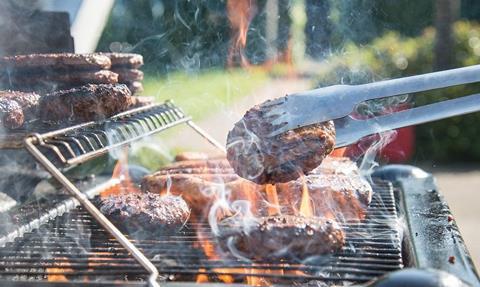According to Hybu Cig Cymru - Meat Promotion Wales (HCC), the Welsh beef industry is hoping the Indian summer heat will help to further boost prices.

“Prices in recent days have picked up again as back-to-school demand, along with fine weather, provided some much-needed additional impetus,” explained Glesni Phillips, HCC Intelligence, Analysis and Business Insight executive, in a detailed overview of the sector in the year to date.
Going into September, the average deadweight price for steers in England and Wales had recorded three consecutive weeks of price increases to stand at 460.5p/kg. “This average is some 29p higher than year-earlier levels and almost 83p higher than the longer term 5-year average,” reported Phillips.
“Looking back through the year so far, deadweight prime cattle prices were also very strong during the first few months of 2023 - but by late spring, driven largely by the cost of living crisis, the average was showing small week-on-week declines.
“Then the consistently cool summer weather impacted on demand for traditional BBQ cuts,” said Phillips.
Prices rise above pre-covid rates
Data from Kantar suggests steaks and mince have still performed well but the total volume of beef sold at British retail was down 2% on the year and some 20% below levels seen for this period in both 2021 and 2020.
“However, 2023 sales volumes are higher than recorded pre-Covid (in 2019), which is a real positive, and it must be remembered that 2021 and 2020 figures included periods of lockdown during Covid, when the foodservice sector was closed and substantially increased sales volumes were experienced by the whole grocery sector at retail,” said Phillips.
Data from the British Cattle Movement Service (BCMS) on numbers of prime cattle on the ground suggest supply should be plentiful on the market during the remainder of this year but might be tight in the future. According to figures from Defra, UK slaughterings for the first half of the year are slightly ahead (1%) of year-earlier levels; however, July recorded low throughput figures, down 4% on June at 166,000 head, perhaps as a result of lower farmgate prices influencing on-farm decisions.
HCC stated that as of 14th September, the current UK average for steers stood some 10% higher than both the EU and Ireland average, which would be weighing on the competitiveness of the product on the global market. Prices in both Ireland and the EU have followed a similar trend to that experienced in the UK since around mid-May.
Ireland remains the dominant market for both UK beef exports and imports. It is reported that the supply of Irish cattle is tight at the moment which is impacting beef import levels, but it is uncertain how long this will last.
This story was originally published on a previous version of the Meat Management website and so there may be some missing images and formatting issues.















